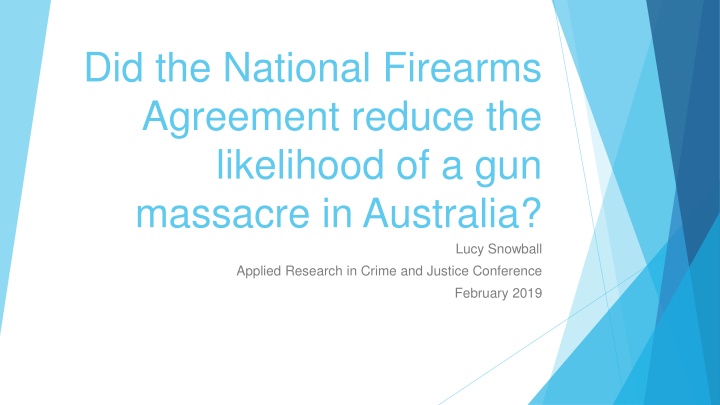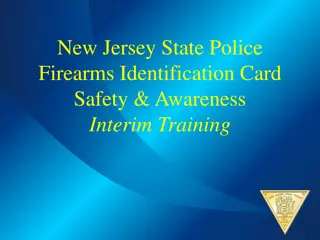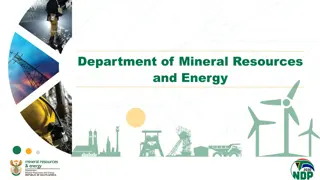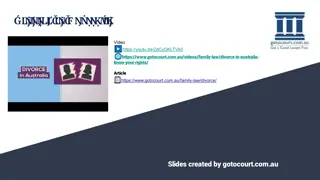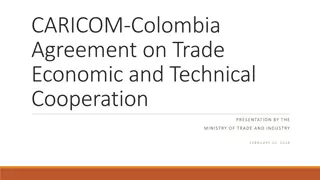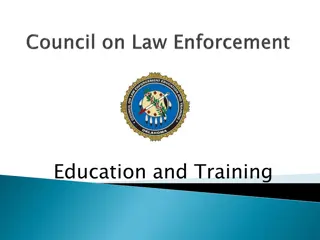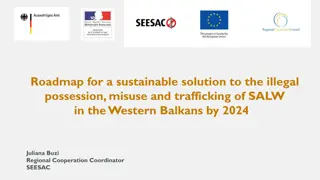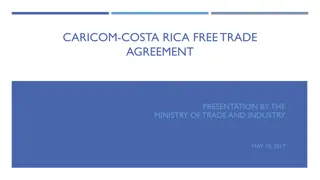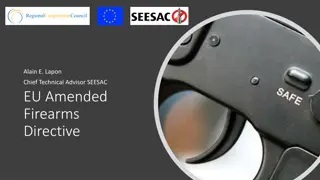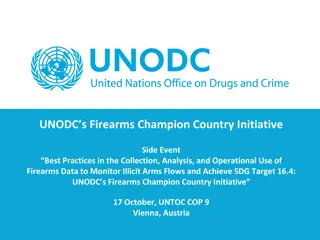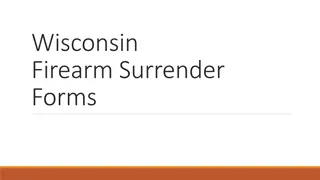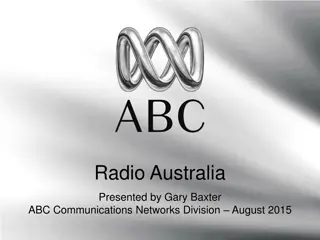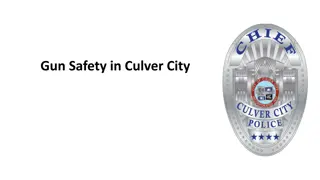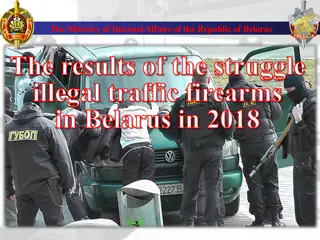Impact of National Firearms Agreement in Australia
This study examines the impact of the National Firearms Agreement on the likelihood of gun massacres in Australia. Lucy Snowball's research, presented at the Applied Research in Crime and Justice Conference in February 2019, delves into the effectiveness of the agreement in reducing such instances.
Download Presentation

Please find below an Image/Link to download the presentation.
The content on the website is provided AS IS for your information and personal use only. It may not be sold, licensed, or shared on other websites without obtaining consent from the author.If you encounter any issues during the download, it is possible that the publisher has removed the file from their server.
You are allowed to download the files provided on this website for personal or commercial use, subject to the condition that they are used lawfully. All files are the property of their respective owners.
The content on the website is provided AS IS for your information and personal use only. It may not be sold, licensed, or shared on other websites without obtaining consent from the author.
E N D
Presentation Transcript
Did the National Firearms Agreement reduce the likelihood of a gun massacre in Australia? Lucy Snowball Applied Research in Crime and Justice Conference February 2019
Background 1996: Port Arthur massacre 35 killed and 19 injured 12 massacres in Australia since 1981 Political will to implement gun control National Firearms Agreement States handed over power to make gun laws to the Commonwealth
What was the National Firearms Agreement? Change in reasons for licensing genuine need Disqualification of classes of people Waiting period 28 days Ban on many automatic, self-loading and/or semi-automatic firearms Storage and Ammunition restrictions Australian gun laws went from relatively lenient to tough
Gun buyback Largest destruction of civilian firearms from 1991 to 2006 globally 640,000 guns bought back Oct 1996 September 1997 60,000 handed in without compensation One fifth of the Australian stock Number of household with a gun 15% (1992) to 8% (2000) $304 million (buyback) + $60 million (public awareness) Special levy
Evaluation of the legislation What was its aim? Not about reducing single death homicides or suicides To reduce the likelihood of a gun massacre Now I don t pretend for a moment ladies and gentlemen that the decision that we have taken is going to guarantee that in the future there won t be other mass murders. I don t pretend that for a moment. What I do argue to you my friends is that it will significantly reduce the likelihood of those occurring in the future (Howard, PM).
Has it been successful? Majority of previous studies focused on trends in homicides and suicides Mixture of results Possibly attributed to differences in: Methodology Start and finish dates Only one quantitative study to date used massacre series Comparison of Australia and NZ Methodology inappropriate and ignored 1997 massacre in NZ Concluded no impact concern around validity Australian experience is cited in global gun debates Difficult to evaluate
Why has this intervention been hard to evaluate? Low count time series Rare event Up until recently no events in post period No clear methodology No comparison group
Aim of current study Test whether the NFA has reduced the likelihood of a gun massacre Sensitivity testing through different: Definitions of a massacre Start of time series Methodologies
Definition of a massacre Two definitions in literature: National Homicide Monitoring Program (used in McPhedran & Baker, 2011): 4+ victims 24 hour period Single shooter Chapman study: 5+ victims Any time period Single or multiple shooters
Massacre dataset Date Location Chapman et al. (2006) McPhedran & Baker (2011) Number killed by firearm Hope Forest, SA 10 N N 6 September 1971 Campsie, NSW 5 Y Y 24 September 1981 Wahroonga, NSW 5 Y Y 1 June 1984 Pymble, NSW 4 N Y 23 January 1987 Top End, NT/WA 5 Y N 19 June 1987 Melbourne, VIC 7 Y Y 9 August 1987 Canley Vale, NSW 5 Y Y 10 October 1987 Melbourne, VIC 8 Y Y 8 December 1987 Oenpelli, NT 6 Y Y 25 September 1988 Surry Hills, NSW 5 Y Y 30 August 1990 Strathfield, NSW 6 Y Y 17 August 1991 Terrigal, NSW 6 Y Y 27 October 1992 Cangai, NSW 5 Y N 31 March 1993 Hillcrest, QLD 6 Y Y 25 January 1996 Port Arthur, TAS 35 Y Y 28 April 1996 Watch Hill, NSW 4 N N 8/9 September 2014 13 12 Total
Methodology Fisher s Exact Test A non-parametric test that can determine whether there is an association between two categorical variables Likelihood Ratio test Geometric distribution (time between events) Generalised linear modelling Geometric distribution (number of failures before a success)
Results Methodology September 1971 September 2017 September 1981 September 2017 (Distribution if applicable) Measure of effect (95% confidence interval) Measure of effect (95% confidence interval) FET ?? = 0.096 ?? = 0.063 (0.000 0.537) (0.000 0.357) LRT (Geometric) ?? = 0.111 ?? = 0.072 (0.015 0.845) (0.009 0.550) GLM (Geometric) ?? = 0.107 ?? = 0.068 (0.011 1.041) (0.010 0.444)
What do the results show? Odds ratio and relative risk estimates are approximately 0.10 Irrespective of analytic method used or starting date Confidence intervals are wide around all point estimates due to the small number of observations over a long period. Upper confidence intervals ~ 0.5 Significant at 10% or 5%
What conclusions can be drawn? Correlative relationship and not causation Scarcity of data suggests results should be treated with caution All three methodologies suggest a reduction in likelihood of 90% No evidence to suggest NFA has been a failure
